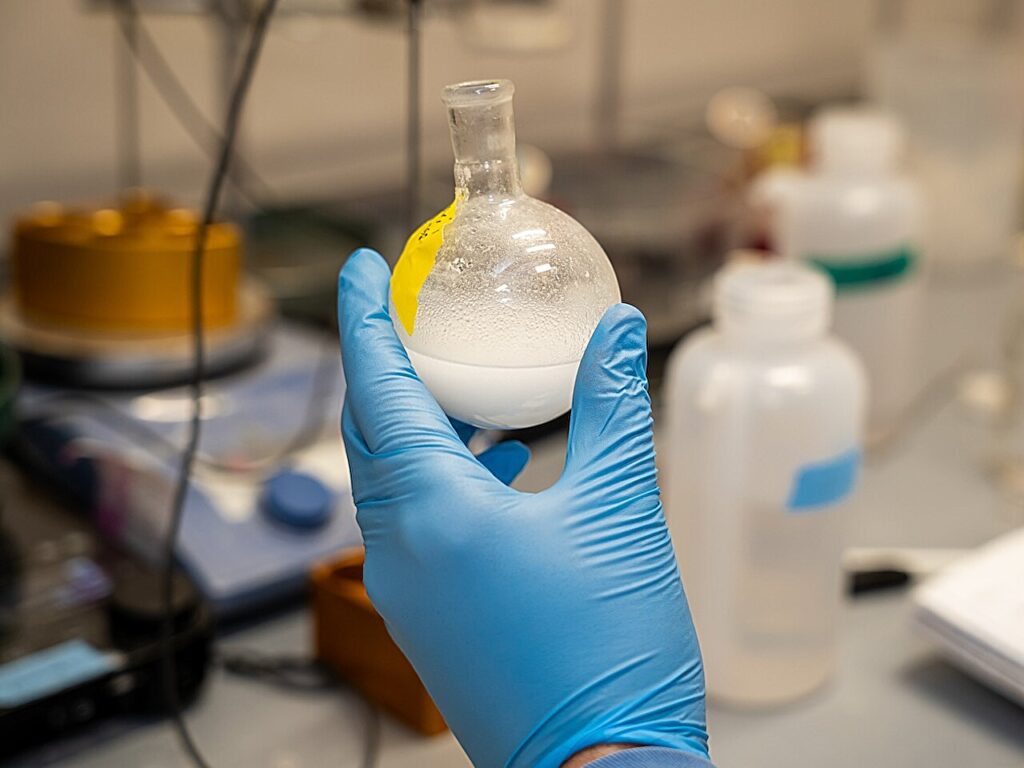Every time a shuttle docks with the International Space Station (ISS), a delicate dance unfolds between the shuttle’s docking system and its counterpart on the station. Thanks to international standards, these mechanisms are universally compatible, ensuring astronauts and cargo can safely and seamlessly enter the station.
A similar challenge arises at the microscopic level when lipid nanoparticles (LNPs)—the revolutionary drug delivery vehicles behind the COVID-19 vaccines—attempt to deliver mRNA to cells. Optimizing the design and delivery of LNPs can greatly enhance their ability to deliver mRNA successfully, empowering cells with the disease-fighting instructions needed to transform medicine.
Escaping the endosome
Unfortunately, even when LNPs reach their target cells, the nanoparticles are typically captured by endosomes—tiny protective sacs within the cell. If LNPs can’t escape, it’s like a shuttle getting stuck in the docking process, the safety of the station just out of reach.
“If the endosomal escape process doesn’t happen, LNPs become trapped and cannot deliver therapeutic cargo,” says Michael J. Mitchell, Associate Professor in Bioengineering (BE) at the University of Pennsylvania School of Engineering and Applied Science (Penn Engineering). “They can make it all the way from a needle into the cell, but if they don’t open that final barrier, they’re useless.”
A new approach
A few years ago, researchers at Carnegie Mellon University made an intriguing discovery: adding a branch to the end of LNPs’ normally linear lipid tails dramatically improved mRNA delivery. This discovery prompted Marshall Padilla, a postdoctoral fellow in the Mitchell Lab, to question if it could serve as the key to developing more effective lipids for mRNA delivery.
“Every day, researchers are making new lipids to enhance the efficacy and safety of LNPs,” says Padilla. “But we lack a clear set of rules for designing better lipids.”
Most research in the field is like a guessing game. Researchers test large libraries of lipid variations, without fully understanding why some work better than others. Padilla, who has a Ph.D. in Chemistry from the University of Wisconsin-Madison, believed that it might be possible to go beyond trial-and-error and design lipids with branched tails from the start to improve their ability to escape endosomes.

Introducing BEND Lipids
One major challenge in making these improved lipids was the difficulty of creating branched ionizable lipids—key components of LNPs that change their charge to help them escape the endosome. These lipids are not commercially available in a branched form, so Padilla had to create them himself.
“The key issue was forming carbon-carbon bonds, which are notoriously difficult,” says Padilla. “I used a complex mix of lithium, copper and magnesium to make the reaction work.”
The result is a new class of lipids called branched endosomal disruptor (BEND) lipids. These unique, branched molecules help LNPs break through the endosomal membrane, making them more effective at delivering mRNA and gene-editing tools.
Improving mRNA Delivery
In a study in Nature Communications, Mitchell, Padilla and their collaborators demonstrate that BEND lipids improve LNP delivery of mRNA and gene-editing tools, in some cases by as much as tenfold.
After testing BEND lipids in a variety of experiments—from editing genes in liver cells to running complex biochemical simulations—the researchers concluded that BEND lipids reliably outperform even the LNPs used by Moderna and Pfizer/BioNTech, the makers of the COVID-19 vaccines.
“We found that our branching groups allow the lipids to help facilitate the escape of our payload from the endosome, where most cargo is destroyed, into the cytosol, where it can perform its intended therapeutic effect,” says Padilla.
Designing better therapeutics
The researchers hope BEND lipids will not only improve LNP delivery but also inspire a new approach to designing lipids, moving away from trial-and-error methods. With a better understanding of how lipids work, researchers could better develop new delivery vehicles for cutting-edge treatments.
“Testing hundreds to thousands of LNPs and seeing which one works can be a major time, cost and labor burden—many labs are not capable of doing this,” says Mitchell. “You want to know the rules so you can design solutions efficiently and cost-effectively.”


